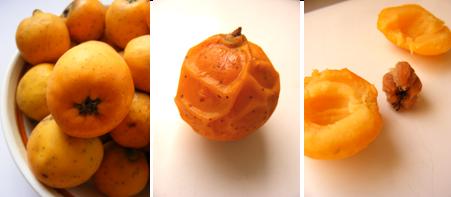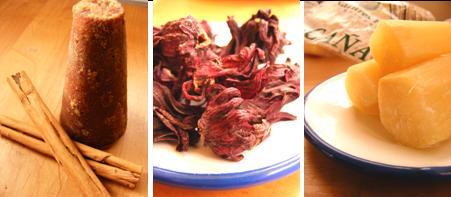Mexican Christmas Punch – Ponche Navideno
Friday, December 24th, 2010
I’ve had a lot of fun experimenting with holiday drinks the last two years – learning about different cultural libations. As you know, these special concoctions are as much a part of the holiday season as are Christmas trees, blinking lights, baked goodies and presents. Raising a glass also raises our spirits – especially when it has some booze in it.
Mexican Christmas Punch, Ponche Navideno (or Ponche de Navidad), is a hot punch served with or without alcohol during the holiday season and most generally during Las Posadas – a nine-night festive re-enactment of Mary and Joseph seeking refuge before Christmas (December 16 – 24). It involves a procession outside – when it’s cold.
Another highlight during Las Posadas are the piñatas filled with sugar cane, tejocotes, oranges, mandarins, jicamas, peanuts and hard sweets. I sure as heck would not want to be near that piñata when it’s busted open. Can you imagine a jicama hitting you from above? Híjole.
I digress. Ponche Navideno is made of fresh and dried fruit and spices. It’s like a hot sangria – anything goes. However, three ingredients are essential to call it Ponche Navideno – tejocotes, piloncillo and canela. The rest vary by cook’s choice, family tradition and availability.
Tejocotes, known also as Hawthorn apples, are native to Mexico and resemble a crabapple. Despite their bright orange color and fruity aroma, they are mild in flavor and their texture is between that of an apple and an underripe apricot. They are the star ingredient, according to most, for Ponche Navideno. They are pricey around $10/lb fresh and can be found in Latin American markets. For this recipe you could also use the preserved or frozen fruit. If you can’t find any, substitute with apricots or kumquats. An interesting note about tejocotes is that they were banned from import into the U.S. for a long time and from 2002 – 2006, they were the fruit most seized by the USDA – most likely for authentic ponche.
Piloncillo is a hard molasses flavored sugar. The liquid molasses spun from raw sugar is reheated and crystallized into small cones. If you cannot locate it, use a light molasses, raw sugar or brown sugar.
Canela (Ceylon cinnamon) is true cinnamon and comes from Sri Lanka. Two thirds of the world’s production of true cinnamon is exported to Mexico. It has a thinner and more fragrant bark than the cassia and is sweet. Canela can be found at Latin markets, in the “Hispanic” food isle or specialty spice stores.

Tejocotes: fresh, boiled, peeled & deseeded

Piloncillo, canela (true cinnamon), jamaica (hibiscus) and sugar cane
In my ponche this year I used fresh tejocotes, apples, prunes, pineapple, oranges and lime. I also like to use jamaica (dried hibiscus) to give it the lovely crimson color and some tartness.
Experiment with this, even if you don’t make it for Christmas. This would be a nice treat after a day out in the snow – I’m thinking about making a pot at our next group snowshoe over a campfire.
Feliz Navidad!





